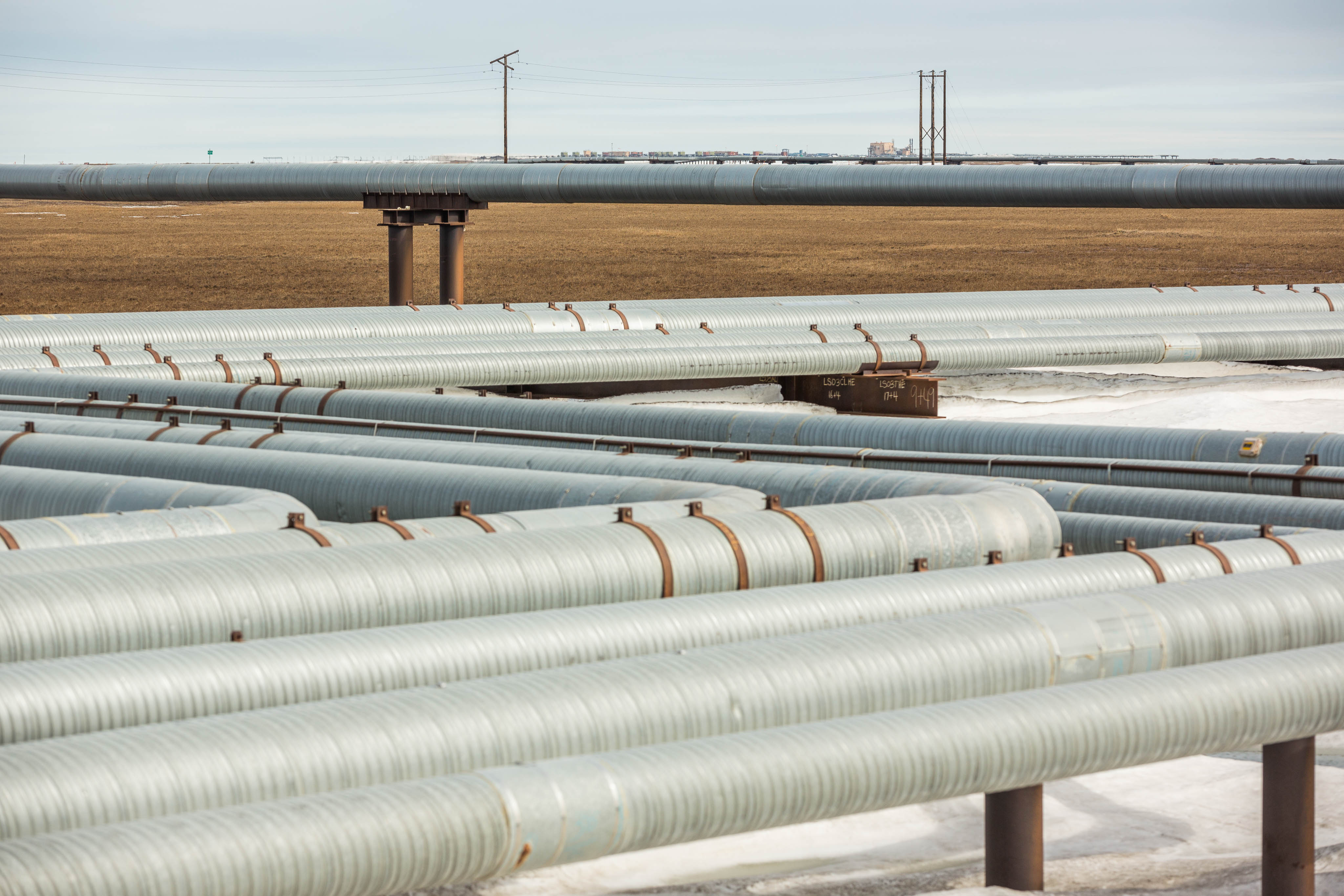After fracking test launched on North Slope, company presses ahead to drill two new wells

A unique effort to test the benefits of hydraulic fracturing on the North Slope is still underway, but the focus is shifting away from a well that’s already been drilled to new sites 25 miles to the west.
Accumulate Energy Alaska drilled a production test well this summer from an existing gravel pad along the Dalton Highway. Oil-flow tests are still underway at that well, known as Icewine No. 2.
But early information helped determine “the size and extent of the oil bearing formations, and the best means for producing from them,” says Accumulate, in a proposed update to its oil spill contingency plans filed with Alaska regulators July 31.
The proposed changes, announced by the Alaska Department of Environmental Conservation on Thursday, are under agency review.
The oil company plans to drill the additional wells next spring, after contractors build about 25 miles of ice roads — frozen routes made with layers of water and ice chips to protect tundra — to reach drill sites from the highway.
The two wells would explore oil deposits about 40 miles south of Slope oil fields. The company says it plans to hydraulically fracture the wells, testing the Seabee formation about 2 miles below the surface.
The formation contributes oil to the Meltwater pool, part of ConocoPhillips’ giant Kuparuk River unit.
Accumulate Energy is working with Burgundy Xploration of Houston. That company is headed by Paul Basinski, who helped discover the large Eagle Ford shale site in Texas.
During the Alaska lease sale in December, the companies’ more than doubled their lease holdings to about 700,000 acres.
This summer, Accumulate has conducted hydraulic fracturing to stimulate the Icewine No. 2 well drilled off the Dalton, and to test the potential for oil to flow. That well is targeting the HRZ shale formation, a bit deeper than the Seabee formation.
The fracturing process creates cracks in rocks to improve the flow of oil or gas after boosting reservoir pressure by injecting water, chemicals and sand.
The testing process at Icewine is still underway after a six-week wait — scheduled to end Monday — that allowed pressure to build up in the shale, said Accumulate’s parent, Australia-based 88 Energy, in a statement released on Wednesday.
That well was unique on the Slope, says Paul Decker, a state petroleum geologist. Accumulate is targeting residual oil and gas that never migrated out of rocks in geologic history. That oil and gas is considered one of the sources for the crude oil at the giant Prudhoe Bay oil field.
[Explorer plans first production test for oil at Prudhoe Bay shale.]
Similar efforts, using long-distance horizontal wells and hydraulic fracturing, have sharply boosted oil and gas production from shale in Texas and other states. Alaska officials, facing a future of falling oil production and revenues, have waited years for a similar turnaround on the Slope.